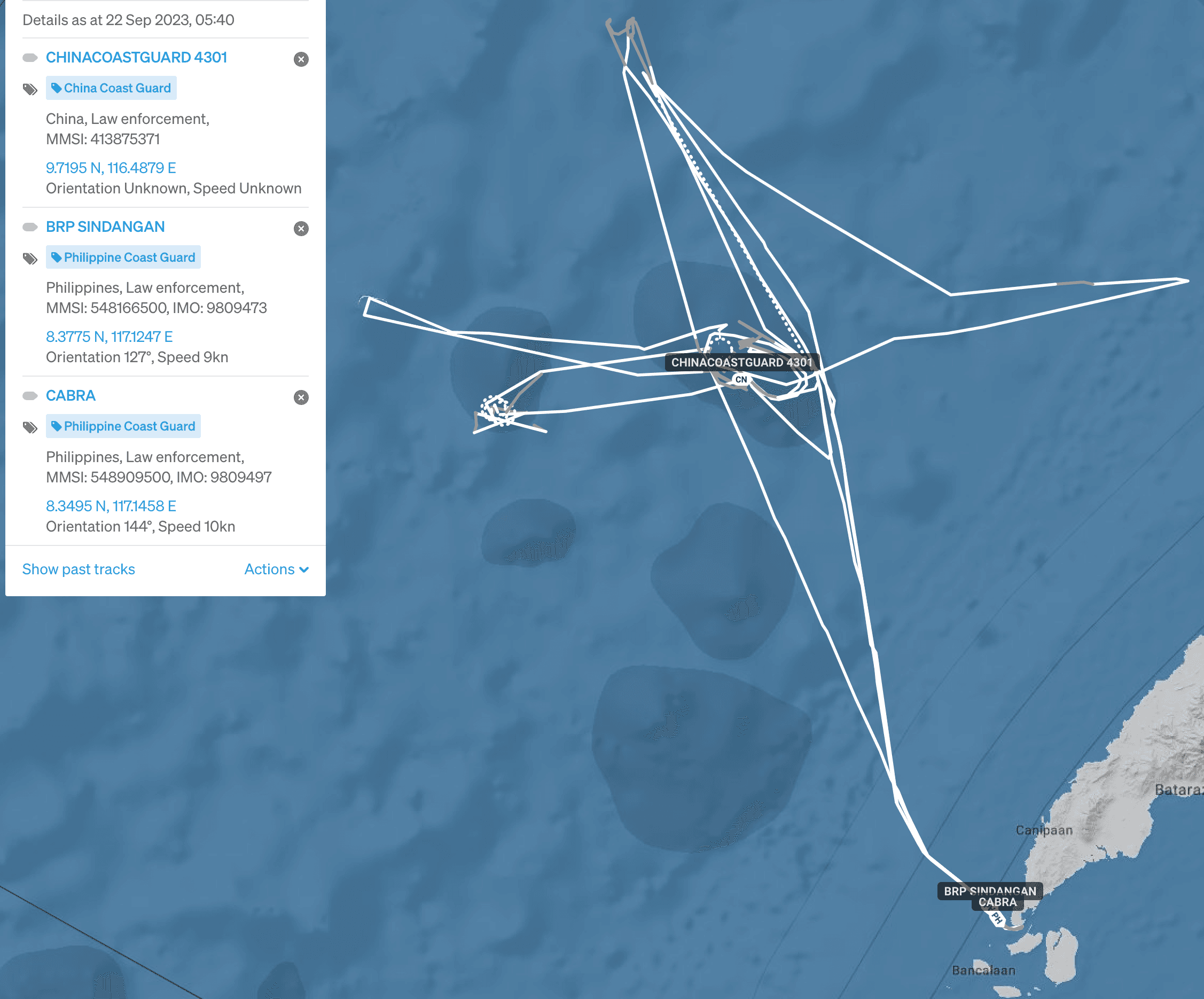Philippine Coast Guard patrols the reefs it just accused China of damaging

From 19-21 September, Philippine Coast Guard (PCG) vessels BRP Cabra and BRP Sindangan patrolled Sabina (Escoda) Shoal and Iroquois (Rozul) Reef, where they were shadowed by China Coast Guard (CCG) ship 4301. The Philippines has recently accused China’s fishing and maritime militia fleets of causing severe damage to these two underwater features within its exclusive economic zone, and is contemplating taking a case to the Permanent Court of Arbitration in the Hague over the matter.

The two PCG ships arrived at Sabina Shoal early on 19 September, appearing to examine its northeast approaches before entering the shoal’s interior from the southeast and remaining there overnight. CCG 4301 left its patrol near Second Thomas (Ayungin) Shoal and arrived at midday on 19 September to observe them from the west.

Later that evening, CCG 4301 briefly went back to China's naval base at the nearby Mischief Reef artificial island before returning to Sabina Shoal.
Meanwhile, apparently concerned that the PCG ships would attempt to approach its outpost aboard the grounded BRP Sierra Madre at Second Thomas Shoal, 10 additional maritime militia ships deployed from Mischief Reef on 20 September. They took up blocking positions east of the shoal, joining two other militia ships which were already there.

But instead, on 20 September the two PCG ships moved north from Sabina Shoal to inspect Iroquois Reef. CCG 4301, meanwhile ranged 120 km to the east for reasons that are not clear, finally turning back to the northwest toward Iroquois Reef at 0400 on 21 September.

CCG 4201 arrived at Iroquois Reef 1600 on 21 September, just as the two PCG ships started for home. The Chinese ship followed the PCG vessels for 120 kilometers, not turning back until they were about 30 kilometers southwest of Sabina Shoal.

The CCG ship was mostly “dark” (not broadcasting its automatic information system, or AIS signal) during that period. As SeaLight analyst Miao Shou recently explained in "Gray Zone Tactics Playbook: Going Dark", CCG ships frequently resort to dark operations when they are involved in operations they don't want detected:
"Going dark" refers to the gray zone tactic of turning off a vessel's Automatic Information System (AIS) transponder to avoid detection. AIS is a signaling system used to identify a vessel's type, position, course, speed and other navigation safety information, and is required by the International Maritime Organization for larger non-military ships operating in international waters.




